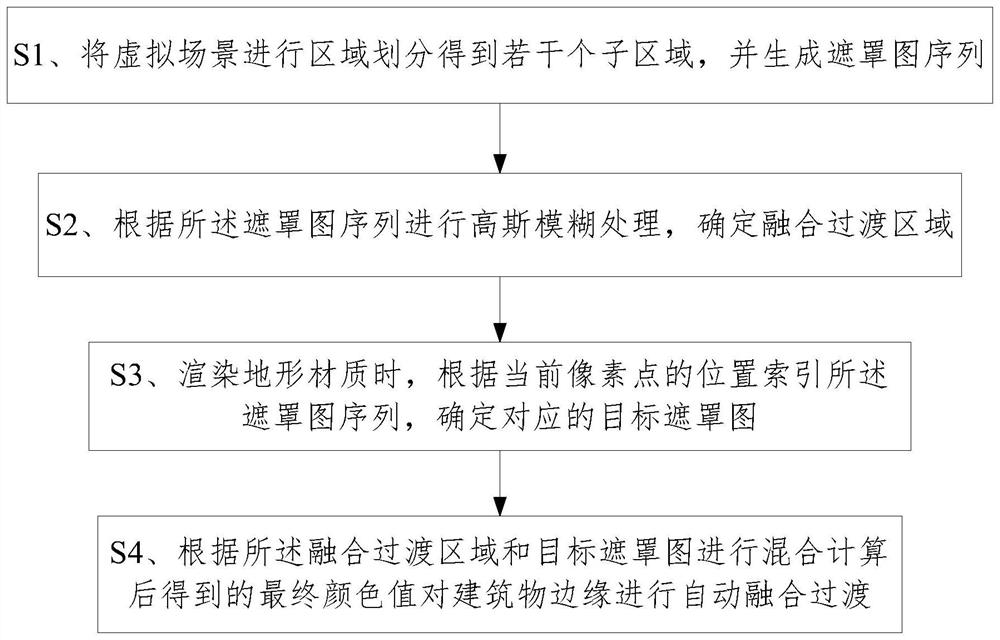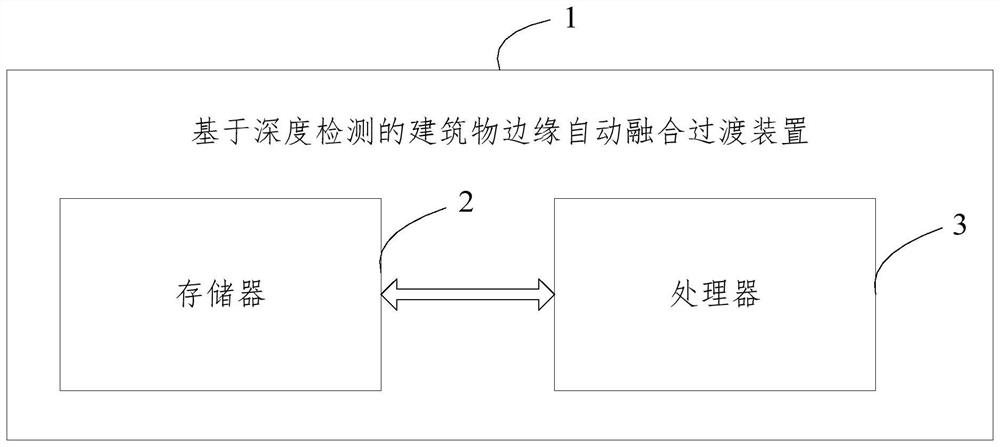Building edge automatic fusion transition method and device based on depth detection
A technology for depth detection and buildings, applied in image enhancement, image analysis, instruments, etc., can solve the problems of poor transition between building edges and terrain, large texture sampling overhead, redundant calculations, etc., to achieve enhanced reality and texture The effect of low sampling overhead and small amount of calculation
- Summary
- Abstract
- Description
- Claims
- Application Information
AI Technical Summary
Problems solved by technology
Method used
Image
Examples
Embodiment 1
[0030] Please refer to figure 1 , an automatic fusion transition method of building edges based on depth detection, including steps:
[0031] S1. Divide the virtual scene into several sub-regions, and generate a mask map sequence and a fusion transition region;
[0032] Step S1 includes:
[0033] S11. Divide the virtual scene into regions to obtain several sub-regions, and each sub-region has a separate rendering target;
[0034] Specifically, after the virtual scene is divided, when the buildings in a certain sub-area are added, modified or deleted, only the rendering target of the area is recalculated, and all proxy models in the scene need not be recalculated. This reduces the computational cost.
[0035] S12: Initialize each sub-area respectively to generate a corresponding mask image, and all the mask images form a mask image sequence.
[0036] Step S12 is specifically:
[0037] When calculating the rendering target, set the proxy model to the rendering state of the ...
Embodiment 2
[0055] Please refer to figure 2 , a building edge automatic fusion transition device 1 based on depth detection, comprising a memory 2, a processor 3 and a computer program stored in the memory 2 and running on the processor 3, the processor 3 realizes when executing the program Each step in Example 1.
PUM
 Login to View More
Login to View More Abstract
Description
Claims
Application Information
 Login to View More
Login to View More - R&D
- Intellectual Property
- Life Sciences
- Materials
- Tech Scout
- Unparalleled Data Quality
- Higher Quality Content
- 60% Fewer Hallucinations
Browse by: Latest US Patents, China's latest patents, Technical Efficacy Thesaurus, Application Domain, Technology Topic, Popular Technical Reports.
© 2025 PatSnap. All rights reserved.Legal|Privacy policy|Modern Slavery Act Transparency Statement|Sitemap|About US| Contact US: help@patsnap.com


